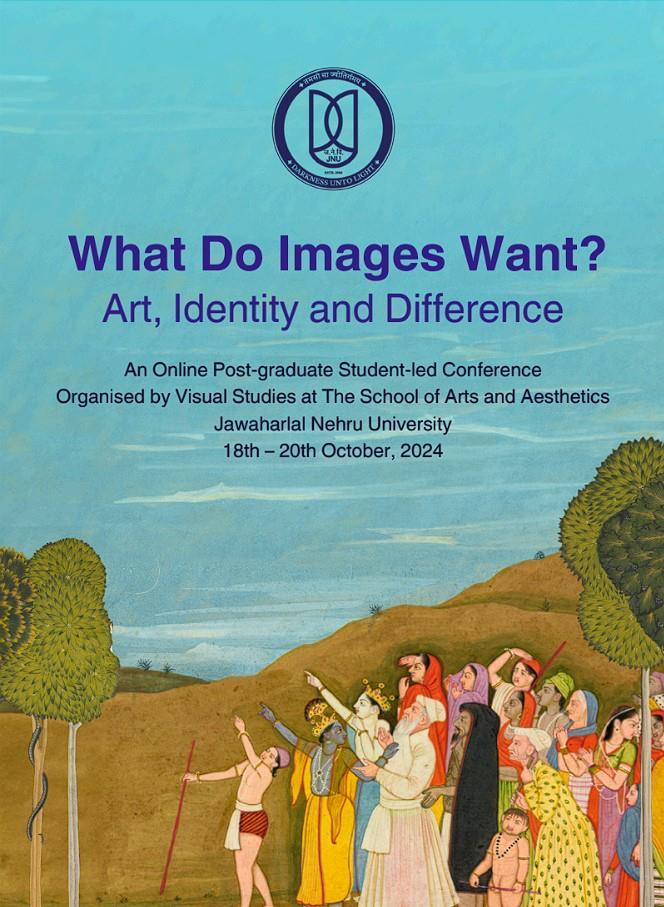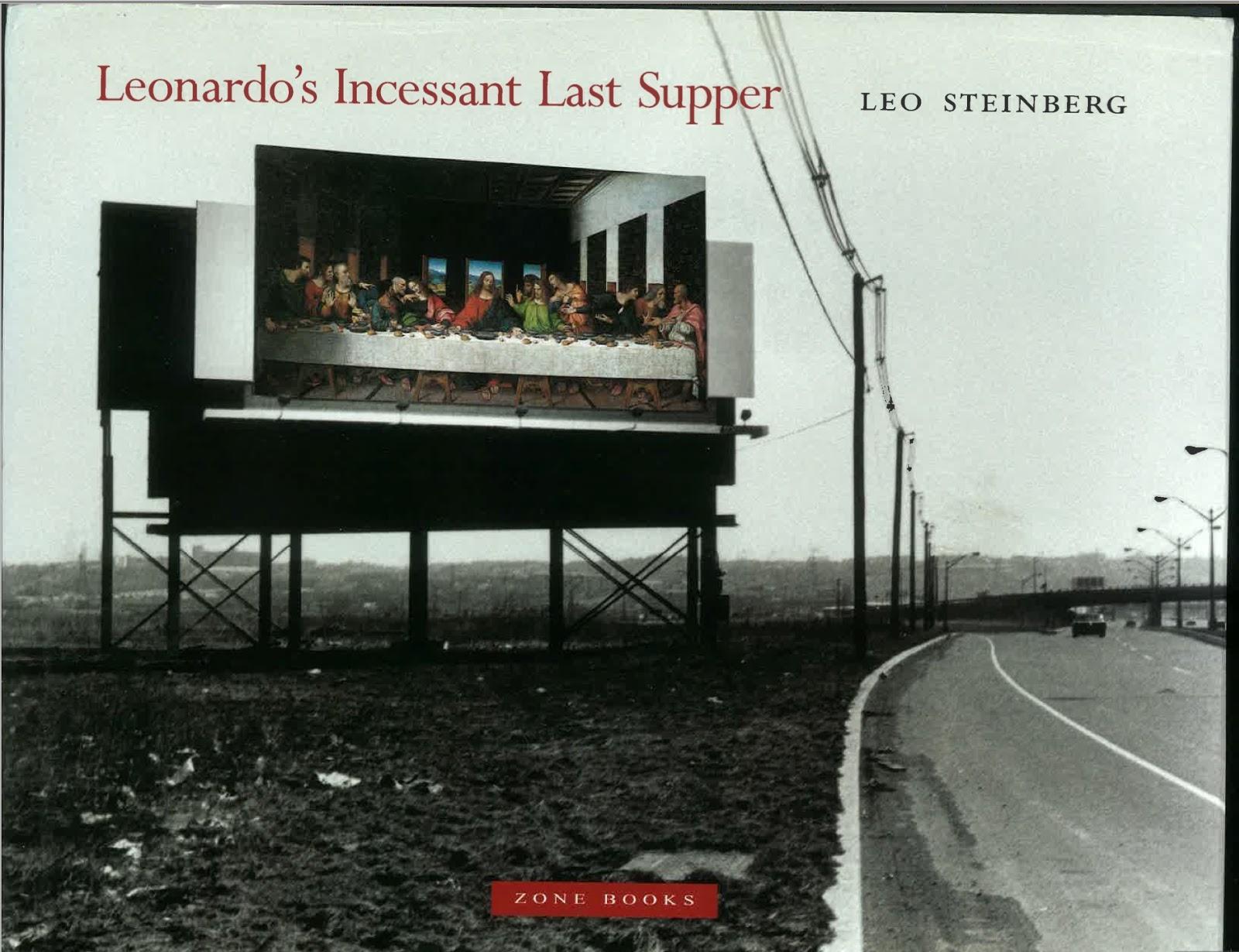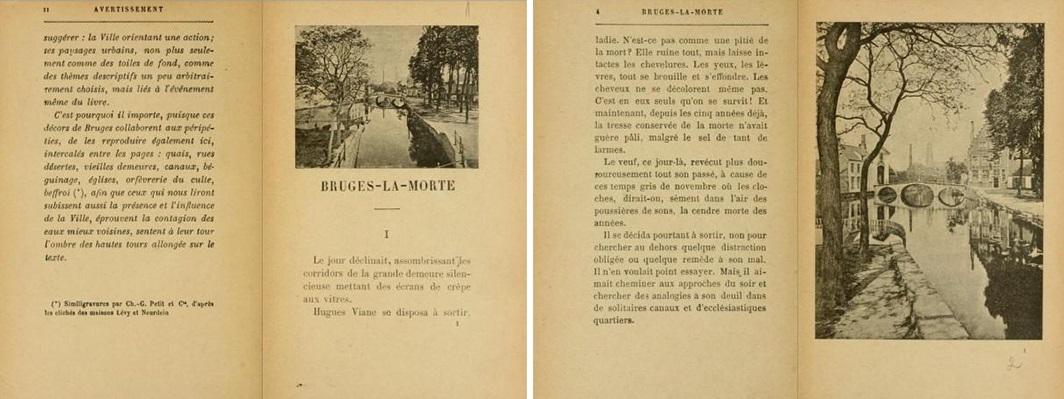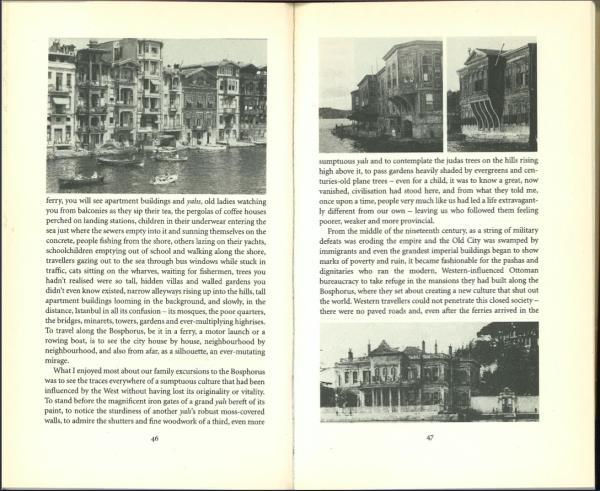Image as Theory: The Place of the Visual in Writing
James Elkins’ keynote address framed the discourse at Jawaharlal Nehru University’s School of Arts and Aesthetics’ Visual Studies postgraduate conference What do Images Want? Art, Identity and Difference, held from 18–20 October 2024. A Professor at the Department of Art History, Theory, and Criticism at the School of the Art Institute of Chicago, Elkins’ talk was titled “Relations between Texts and Images” as it foregrounded the dialectic between these two mediums within art writing. Through his two book projects—“What is Interesting Writing in Art History” and “Writing with Images”—he targeted his intervention in the heavily theorised text-driven field of Visual Studies by interrogating the agency of images and lamenting the subservience, thus far, of image to text. His argument directed us towards the pressing need to better study and theorise the use of images in art writing for writers and readers alike.

Poster for the conference What do Images Want: Art, Identity and Difference at the School of Arts and Aesthetics, Jawaharlal Nehru University. (Source: Visual Studies Department, School of Arts and Aesthetics).
By taking as his starting point the question of what makes for interesting writing in art history, Elkins moved towards understanding the potential of writing (with text as well as image) as an expressive medium. If academic writing is seen as a neutral medium, taught to be plain and transparent, for fear of the distortion of ‘truth’ and facts, art writing—comprising the disciplines of art history, art theory and art criticism—is expected to merely incorporate images. However, how these images are used and the particular historical background of their usage through academic writing is seldom given greater thought. When we encounter the images of art works in texts, their representations serve as intentionally inadequate reminders—appearing in black and white or extremely poor quality, cropped abruptly, magnified or diminished as per the dimensions of the page. Visual studies’ theory largely uses images as illustrations, ornaments or examples. Images here appear as mnemonics of artworks or accompaniments to the writing to exemplify the text’s arguments. It is the job of the text (read: author) to generate thought.

Examples of how black-and-white images representing famous artworks are fitted to the dimensions of the page. (Spread from Ellen C. Oppler's Picasso’s Guernica [1988] Source: James Elkins).
Words may be seen as being in a parasitic relationship with the image as authors attempt to control images with their words. Images are often relegated to being passive exemplars, without a voice of their own. However, they need not be mere representations of art but should shape and form arguments of our texts, Elkins insisted. For disciplines discussing the power of the visual artefact, it is rather ironic that images in art writing do not possess the capacity to guide, delay or interrupt the argument made through text. Images rarely ever disturb or distort the argument, much less contradict it or propose their own. Can we allow the visual as much discursive space as the linguistic? Elkins called for images to be more than reflections of thought by becoming originators of thought themselves. Images ought to participate in the development of theory. An image that provides commentary through insight into theory or extending an argument, thus, becomes intelligent theory in its own right.

Cover of Leo Steinberg's Leonardo’s Incessant Last Supper (2001). (Source: James Elkins)
James Elkins drew our attention to interesting art writing in Leo Steinberg’s Leonardo’s Incessant Last Supper. Steinberg’s greatest achievement here was to recognise the endless replicating, adapting and parodying of Da Vinci’s famous mural in image and textual commentary as evidence of its complexity. Elkins finds the writing in the book to be exemplary due to its own ambiguities as it forces a contradiction between the logic and authorial voice-informed writing. The ‘intelligent’ reactions and ‘perceptions’ collected by the author provide greater insight into the painting, as exemplified in the book’s cover—a photograph of a billboard in New Jersey. Elkins then took the audience through his curated history of exemplary interesting writing, i.e., writing across genres whose experimentation with images defies the normative. This featured the works of Rosalind Krauss, WG Sebald, EH Gombrich, Daniel Arasse, Hélène Cixous, Jean Louis Schefer, Thierry De Duve and John Berger, among others.

Spreads from Georges Rodenbach's Bruges-La-Morte (1892). (Source: James Elkins)
Unhappy with the few instantiations within art writing, Elkins looked further afield towards fiction writing for novel interpretations of the dialectic between image and text. The example he cited was Georges Rodenbach’s 1892 symbolist novel Bruges-La-Morte, which extensively features images of the city of Bruges. The author admits how the images cast a shadow over the writing in the book. Rodenbach repeats the view of the first image on the following page, taken at a later time and about 15 feet closer, bringing into dialogue the two images through their differences while taking us on a walk with the protagonist. These images clue us into the psyche of the (present) widower protagonist as well as his (absent) wife, even as it ascribes a potent character to the city itself.

Spread from the English translation of Georges Rodenbach's Bruges-La-Morte (1892). (Source: James Elkins)
The talk, whose source material is available as lecture series texts online, was extremely pertinent for researchers (particularly those in the infancy of their careers). It encouraged reflexivity and experimentation from the perspective of a person whose life’s work has led them in the pursuit of reinvigorating the dialectic between images and texts in their own practice.
To learn more about other panels that were held as part of What do Images Want? Art, Identity and Difference, read Sudha Padmaja Francis’ reflections on the panel “Queering the Canon: Reimagining Art Historical Paradigms”.
Images courtesy of the Keynote Speaker.




